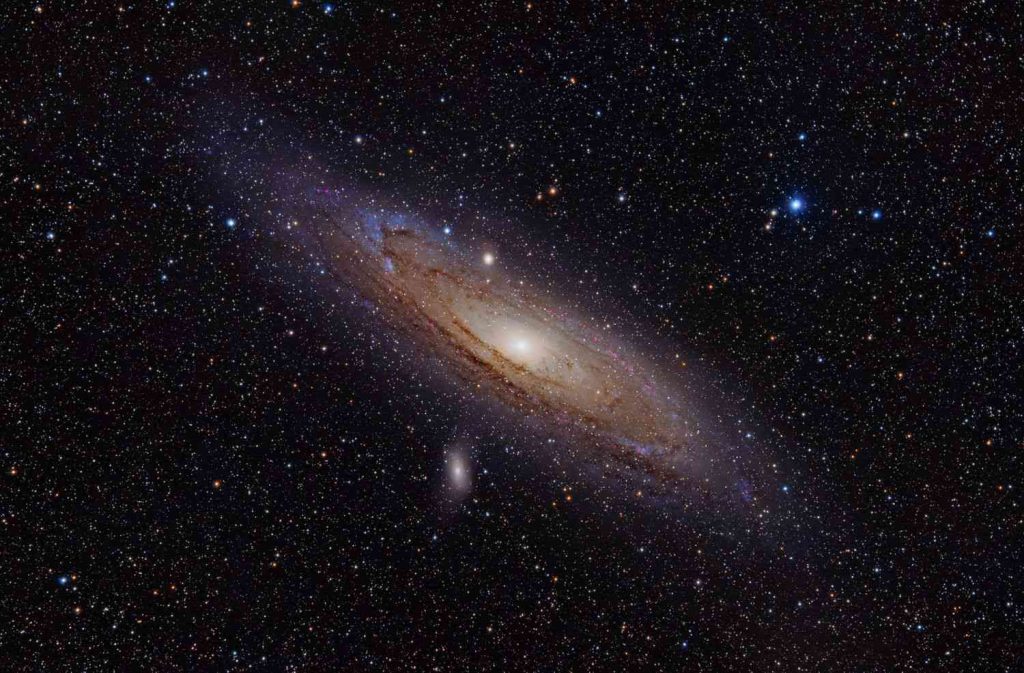The universe, a vast and enigmatic expanse, has captivated human curiosity for millennia. As we peer into the depths of space, we are presented with a mesmerizing tapestry of galaxies, stars, and cosmic phenomena. Mapping this cosmic landscape is a monumental task that spans the realms of astronomy, physics, and cosmology. In this article, we will embark on a journey through the techniques and technologies used to map the universe, from the ancient skies observed by our ancestors to the cutting-edge surveys and experiments of modern astronomy.
The Cosmic Microwave Background: A Snapshot of the Early Universe
The quest to understand the universe’s origin led to the discovery of the Cosmic Microwave Background (CMB), a relic of the Big Bang. The CMB is the faint glow of radiation that permeates the entire universe, originating from the hot, dense state that prevailed shortly after the Big Bang.
- Discovery: In 1965, Arno Penzias and Robert Wilson accidentally discovered the CMB while conducting experiments using a sensitive radio telescope. This groundbreaking discovery provided strong evidence in support of the Big Bang theory, offering insights into the universe’s early evolution.
- Mapping the CMB: Satellites like the Cosmic Background Explorer (COBE), Wilkinson Microwave Anisotropy Probe (WMAP), and Planck have mapped the CMB’s temperature variations across the sky with unprecedented precision. These maps reveal subtle fluctuations in the CMB, providing valuable clues about the universe’s composition, age, and structure.
Galaxy Surveys: Charting the Cosmic Landscape
Galaxies, vast collections of stars, gas, and dust, are the building blocks of the universe. By studying their distribution, properties, and interactions, astronomers can unravel the cosmic web’s structure and evolution.
- Redshift Surveys: One of the primary methods used to map galaxies is measuring their redshift, a phenomenon caused by the Doppler effect. As galaxies move away from us due to the expansion of the universe, their light is shifted towards longer, or redder, wavelengths. By analyzing this redshift, astronomers can determine a galaxy’s distance and velocity, creating detailed 3D maps of the universe’s large-scale structure.
- Sloan Digital Sky Survey (SDSS): Launched in 2000, the SDSS is one of the most ambitious galaxy surveys to date, mapping millions of galaxies across a large portion of the sky. This monumental project has revolutionized our understanding of galaxy distribution, dark matter, and the cosmic web’s intricate architecture.
- Future Surveys: The next generation of galaxy surveys, such as the Dark Energy Spectroscopic Instrument (DESI) and the Euclid mission, promises to push the boundaries of our cosmic knowledge even further. These ambitious projects aim to map billions of galaxies, shedding light on dark energy, dark matter, and the fundamental laws governing the universe’s evolution.
Dark Matter and Dark Energy: The Invisible Forces Shaping the Universe
While galaxies and stars capture our attention, the universe’s majority remains elusive and mysterious. Dark matter and dark energy, two enigmatic components, dominate the cosmic landscape, exerting gravitational influence on galaxies and the expansion of the universe.
- Dark Matter: Comprising approximately 27% of the universe’s mass-energy content, dark matter remains undetected by conventional telescopes. Its presence is inferred from gravitational effects on visible matter, influencing galaxy formation, and the cosmic web’s structure.
- Dark Energy: Accounting for about 68% of the universe, dark energy drives the accelerated expansion of the universe. Its nature remains speculative, with theories ranging from a cosmological constant to dynamic fields influencing cosmic expansion.
- Mapping the Invisible: Indirect methods, such as gravitational lensing and galaxy rotation curves, provide insights into dark matter’s distribution and properties. Future surveys, like DESI and Euclid, aim to map dark matter’s cosmic distribution, unraveling its role in shaping the universe’s large-scale structure.
Multi-wavelength Astronomy: Unveiling the Universe’s Hidden Secrets
To fully understand the universe’s complexity, astronomers employ a multi-wavelength approach, utilizing different regions of the electromagnetic spectrum to study cosmic phenomena.
- Radio Surveys: Radio telescopes, like the Very Large Array (VLA) and Atacama Large Millimeter/submillimeter Array (ALMA), capture radio waves emitted by celestial objects, revealing insights into galaxy formation, star formation regions, and active galactic nuclei.
- Infrared and X-ray Observations: Infrared telescopes, such as the Spitzer Space Telescope and James Webb Space Telescope (JWST), detect thermal radiation from cool celestial objects, unveiling protostars, planetary systems, and distant galaxies. X-ray observatories, like Chandra and XMM-Newton, capture high-energy emissions from hot, violent regions, including black holes, supernova remnants, and galaxy clusters.
Conclusion
Mapping the universe is a monumental endeavor that spans centuries of scientific exploration and technological advancement. From the discovery of the Cosmic Microwave Background to the intricate surveys of galaxies and cosmic structures, astronomers have pieced together a fascinating cosmic narrative that continues to inspire wonder and curiosity.
As we push the boundaries of observational astronomy, employing cutting-edge technologies and innovative techniques, we gain deeper insights into the universe’s origin, evolution, and ultimate fate. The ongoing quest to map the universe underscores humanity’s insatiable curiosity and the relentless pursuit of knowledge, fostering a deeper appreciation for the awe-inspiring cosmos that surrounds us.
In our exploration of the cosmos, we are reminded of the interconnectedness of all things, from the smallest particles to the vast cosmic web spanning billions of light-years. Through collaboration, innovation, and a shared passion for discovery, we continue to unravel the mysteries of the universe, celebrating the beauty, complexity, and diversity of the cosmic tapestry that defines our existence in the vast expanse of space.
Read More: Coinbase Aims to Escalate Core Issue in U.S. SEC Case to Higher Court
